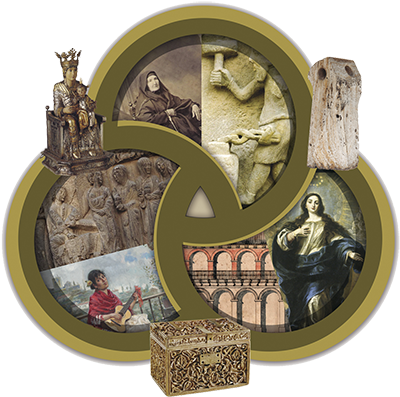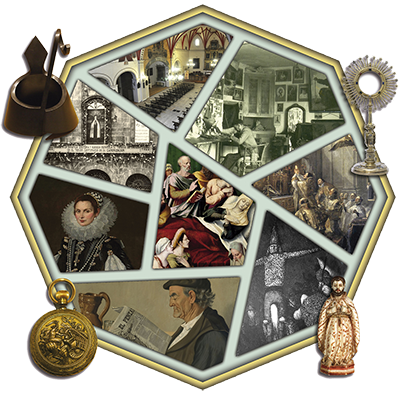presentation
Julio Valdeón states that the history of a town belongs to all its inhabitants and constitutes the best support for knowing where we are heading. If this past is linked to material testimonies, to architecture, to the figurative arts, at final to cultural assets, the collective conscience will be much stronger. Losing the references of the past is tantamount to erasing the path and encouraging disorientation.
 The contemplation and study of the cultural assets that make up our heritage always leads us to a background - the substantive - and to forms, which constitute the adjective. Both, form and substance are solidly linked to each other and lead us back to the society in which they were born.. The context is therefore fundamental and a prerequisite sine que non to go to knowledge.
The contemplation and study of the cultural assets that make up our heritage always leads us to a background - the substantive - and to forms, which constitute the adjective. Both, form and substance are solidly linked to each other and lead us back to the society in which they were born.. The context is therefore fundamental and a prerequisite sine que non to go to knowledge.
In the society of past centuries, with very high percentages of illiterate people, images and words replaced written texts as the means of cultural dissemination. Some areas of artistic and literary significance were even reserved for cultured minorities, in a phenomenon of "semantic discrimination".
There were, and still are today, different levels of reading of the artistic work, both to please the masses and the more elitist and refined minorities. In the theatre there were also quotations and erudite references inaccessible to the understanding of the unlettered. Alongside an immediate, narrative and "linear" plot, there were subplots and symbolic elements, which acted as a rhetorical complement that could only be understood by the educated. Something similar occurs in many artistic compositions, particularly when the patron, mentor or artist possessed literary and cultured resources.
 On the one hand, the majority public enjoyed everything that vividly impressed their senses, while a cultivated minority - behind the appearances of reality - sought proportion, hidden or coded messages based on symbolic reading codes. A whole world of signs that were difficult to interpret turned book covers, commemorative medals and some paintings into veritable exercises or games of wit and acuity.
On the one hand, the majority public enjoyed everything that vividly impressed their senses, while a cultivated minority - behind the appearances of reality - sought proportion, hidden or coded messages based on symbolic reading codes. A whole world of signs that were difficult to interpret turned book covers, commemorative medals and some paintings into veritable exercises or games of wit and acuity.
Looking at, seeing and reading through heritage can be a useful exercise when it comes to making cultural readings at core topic of numerous sites from the past. For centuries, various texts have pointed out the difference between the act of "looking" and "seeing", attributing to the mass of the population the inability to pass from one stage to the other, understanding the perception of the works as a true intellectual act that required the capacity for judgement and discernment, which was forbidden to the majority of the public. A final stage in understanding was that of "reading". Lope de Vega, when dealing with a biblical episode, stated: "In an image I read this story" and Father Sigüenza, referring to a painting by Bosch, asserted: "I confess that I read more in this panel... than in other books in many days". The challenge for the scholar and the citizen, eager to learn, still consists of analysing and reading images produced in contexts so different from today's and with codes of interpretation so far removed from our times.
This blog will focus on the construction of images and their iconographic characterisation by means of collective or personal attributes, photographs with history and stories with photography, various objects of everyday life, cultured and popular works and drawings.
We begin this digital adventure with the conviction that the knowledge will help us to value our cultural heritage more highly, always with the intention of a calm contemplation of it, due to its condensing and integrating character. The former because history, techniques, iconography, use and function and aesthetics merge in monuments and objects. Secondly, because, when all that heritage was created, architecture, figurative and sumptuary arts coexisted harmoniously with thought, literature, music, liturgy and the protocol.

